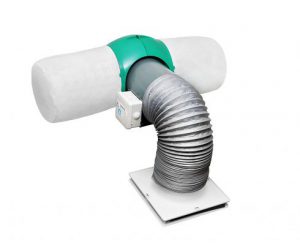Contents
During the summer, ventilation in your home doesn’t seem to be much of an issue. That’s because the weather is warm and most people will leave the windows or doors open. During the winter months, however, you are going to need the best house ventilation tips available to improve your home’s air quality.
House Ventilation Tips to Start Now
When dealing with home ventilation, you want steps that can be taken now. Here are a few house ventilation tips that can be started immediately.
Open Doors and Windows
Obviously, your first solution will be to open the windows as often as possible. Cooking in the kitchen and bathing in the bathroom are usually the most troubling areas. If you are hanging any clothing to dry, you need an open window there as well as this will also raise humidity.
If you are concerned about cold air entering the entire home, simply keep the door to that room shut until you close the window. This also helps to trap any steam and condensation from reaching other rooms.
Leave Internal Doors Open
When you aren’t cooking or bathing, you’ll want to have as many internal doors of the home open. This allows the air to flow freely and also stops bad smells from being trapped.
If you have a ceiling or desk fan, turn it on and allow it to blow the warm air back down to the ground level. This provides a natural way to heat the home as well, especially when you have high ceilings.
Air out the House
Ideally, you should open all your windows at least three times a day for a few minutes at a time. Of course, you need to make sure that your central heating is turned off while you do this. You may also need to put on your winter coat.
By taking this simple step, you allow the stale air to escape the home and fresh air comes in to replace it. This immediately solves many condensation issues as well as helps bad odours to escape.
House Ventilation For When all Else Fails
Short term tips are great for taking action, but sometimes the best solutions require a little more work. Here are some long-term tips that will keep your air quality optimal in the home.
Install an Extractor Fan
Installing an extractor fan above the kitchen hob for use every time you cook is a great option for keeping the air fresh. Make sure you don’t get a model that simply recycles the air, but one that hooks into an exterior vent.
You could also install an extractor fan in the bathroom. Run this whenever you are in the room to reduce condensation, lower your chance of odours and reduce the risk of mould. If the room gets steamy, allow the fan to run for an additional 30 minutes after you are done.
Add Structural Ventilation
Adding vents from the main part of your home into the roof can help improve airflow. This also stops issues like dry rot. Don’t forget places like your basement where it is often dark and moist.
Keep in mind that it is never wise to take on a structural project of your home alone. To help you determine the best way to add structural ventilation, you’ll want to contact a professional.
Add a PIV Unit to the Home

PIV units (Positive Input Ventilation) are able to pump fresh air into the home while forcing out stale air. This helps to prevent built-up damp which can lead to mould or allergens from spores.
The PIV unit will keep air circulating without compromising your central heating system. While air is in circulation, the warm air is less likely to escape.
While using a PIV unit, you won’t have to open your windows on the cold days. No more winter jackets in the house for you!
To find out more about PIV Units, be sure to read our article, “PIV Units Explained.”
Conclusion
By following these house ventilation tips, you will effectively reduce bad odours, condensation, mould and damp in your home. This can be possible even during the cold, winter months.



